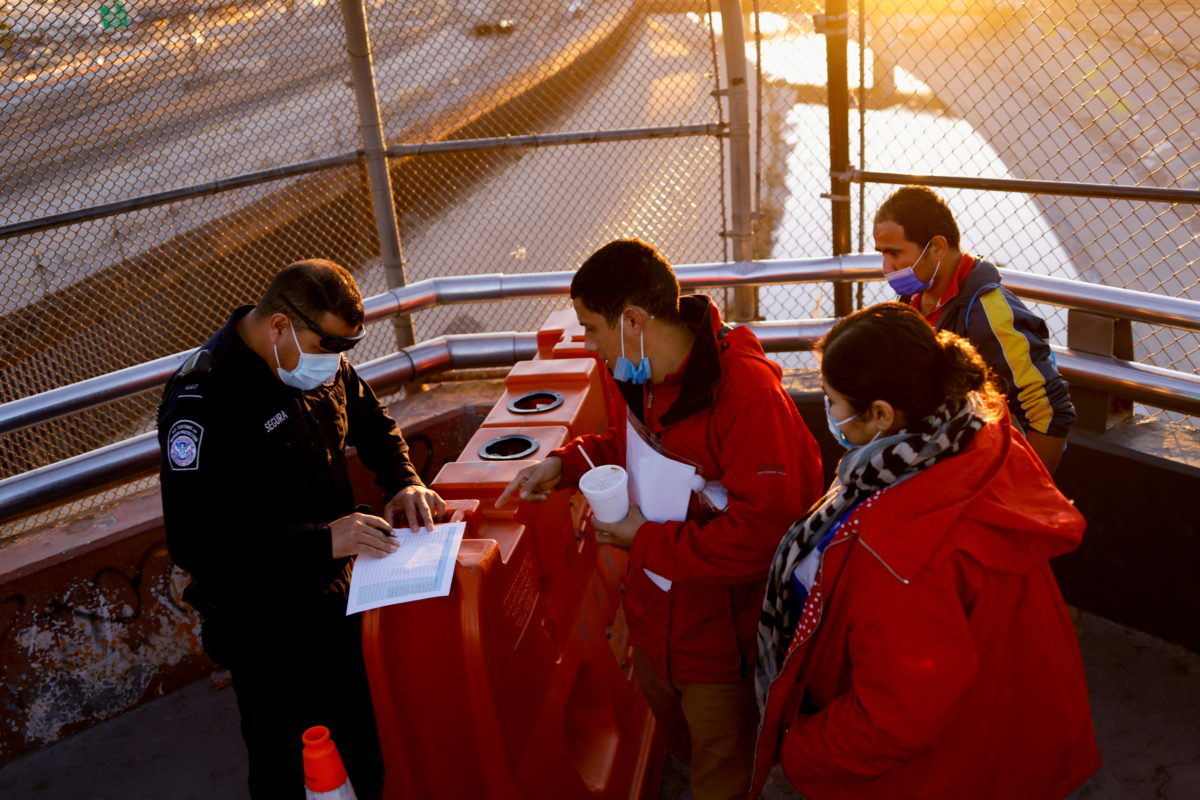The Biden Administration announced new rules changing the asylum process aimed at decreasing the 1.7-million-case-backlog in U.S. immigration courts.[1] Under this new policy, some migrants will have their asylum claims adjudicated by asylum officers rather than immigration judges.[2] The Administration’s goal is to make the entire asylum process take approximately six months as opposed to the current average of five years.[3] In addition to improving judicial efficiency and decreasing the backlog, this sweeping change could create a less adversarial alternative to the process of defensive asylum in removal proceedings.[4] However, asylum advocates warn that this policy change raises major due process concerns because it will make it exceedingly difficult for asylees to secure representation.
This change involves the controversial system of expedited removal, a process in which immigration officials deport migrants at the border without a hearing unless they state a fear of returning to their home country. Border officials are required to ask migrants who are subject to expedited removal if they have a fear of return.[5] Migrants that state this fear are then scheduled for a credible fear interview with an asylum officer from USCIS.[6] In this interview, the asylum officer makes the low threshold preliminary determination of whether the migrant has a “significant possibility” of establishing eligibility for asylum.[7] Until now, migrants that pass this interview are then put into the defensive asylum process, where they wait to have their case adjudicated by immigration judges in the immigration courts, which are housed in the Department of Justice.[8] Under the new rules, the USCIS asylum officer would adjudicate the entire asylum claim rather than merely make the preliminary credible fear determination.[9]
Many advocates welcome this change because this new process would be less adversarial than defensive asylum.[10] Under the current process of removal proceedings, the government is always represented by counsel from the Department of Homeland Security’s Bureau of Immigration and Customs Enforcement (ICE). These attorneys aggressively pursue removal in every case, which can be extremely traumatizing for asylees.[11] In contrast, asylum officer interviews are private and the government is not a party advocating for removal.[12] Therefore the new rules have the potential to create a more humane and less traumatizing alternative.
However, the change also raises major due process concerns. Speeding up the process so significantly will make it difficult for asylees to arrange for representation in time for their hearings.[13] Although restricting access to counsel would raise due process concerns in any aera of law, access to counsel in removal proceedings is particularly crucial because representation vastly improves chances of avoiding deportation. Research consistently shows that in removal proceedings, representation drives outcomes. A 2011 study of removal proceedings in New York found that individuals with representation were 500% more likely to win their cases than those without representation.[14] The study also found that 74% of non-detained represented respondents remained in the U.S. compared to only 3% of detained pro-se litigants.[15] The New York Immigrant Family Unity Project (“NYIFUP”), the country’s first public defender-style system for detained immigrants, projected a 48% success rate for removal cases compared to a mere 4% success rate of pro se litigants at the same court before the program.[16] Another study found that “the single most important factor affecting” outcomes in asylum cases was whether the individual had representation.[17]
This drastic disparity exists largely because immigration law is so complex. Asylum and Convention Against Torture (“CAT”) claims involve complicated legal issues with ever-evolving standards.[18] The Ninth Circuit has categorized immigration law as a “a labyrinth that only a lawyer could navigate.”[19] The enormous impact of representation in this area of law is also because fear-based claims require respondents to recall traumatic events that are often deeply upsetting. One study found that over 80% of asylum seekers suffer from post-traumatic stress disorder (“PTSD”).[20] PTSD can prevent respondents from explaining events in a linear or coherent manner that adjudicators find credible.[21] Attorneys help respondents organize their accounts in ways that adjudicators will find reliable. Attorneys can also increase access to resources like mental health evaluations that help explain discrepancies in timelines or gaps in memory.
While this new policy change has immense potential to improve the asylum process, it should be coupled with universal representation for asylees to ensure due process and give each applicant a fair adjudication. Asylum claims involve one of the most significant liberty interests that one could imagine. The stakes are enormously high because an adverse outcome results in deportation. For many, this means returning to persecution, torture, or death. As the U.S. Supreme Court has noted, deportation can deprive an individual of “all that makes life worth living.”[22]
[1] New Rules from Biden Administration Aim to Decide U.S. Asylum Cases More Quickly, PBS (Mar. 24, 2022), https://www.pbs.org/newshour/politics/new-rules-from-biden-administration-aim-to-decide-u-s-asylum-cases-more-quickly.
[2] Id.
[3] Eileen Sullivan, Biden Administration Prepares Sweeping Change to Asylum Process, N.Y. Times (March 24, 2022), https://www.nytimes.com/2022/03/24/us/politics/us-asylum-changes.html.
[4] Doris Meissner, Biden Administration Asylum Processing Revamp at the U.S. Border Could Be a Game Changer, Migration Policy Inst. (Aug. 2021), https://www.migrationpolicy.org/news/biden-asylum-processing-proposed-rule.
[5] Id.
[6] Eileen Sullivan, supra note 3.
[7] Doris Meissner, supra note 4.
[8] Id.
[9] Eileen Sullivan, supra note 3.
[10] Lucas Guttentag & Ahilan Arulanantham, Extending the Promise of Gideon: Immigration, Deportation, and the Right to Counsel, ABA (Oct. 1, 2013), https://www.americanbar.org/groups/crsj/publications/human_rights_magazine_home/2013_vol_39/vol_30_no_4_gideon/extending_the_promise_of_gideon/.
[11] Id.
[12] Doris Meissner, supra note 4.
[13] Eileen Sullivan, supra note 3.
[14]Accessing Justice II: A Model for Providing Counsel to New York Immigrants in Removal Proceedings, NYIR (Dec. 2012), at 1, https://law.yale.edu/sites/default/files/area/center/liman/document/nyirs_reportii.pdf.
[15] Id.
[16] Talia Peleg, supra note 10, at 198.
[17] Jaya Ramji-Nogales et al., Refugee Roulette: Disparities in Asylum Adjudication, 60 Stan. L. Rev. 295, 340 (2007).
[18] Sabrineh Ardalan, Access to Justice for Asylum Seekers: Developing an Effective Model of Holistic Asylum Representation, 48 U. Mich. J.L. Reform 1001, 1016 (2015).
[19] Biwot v. Gonzales, 403 F.3d 1094, 1098 (9th Cir. 2005).
[20] Sabrineh Ardalan, Access to Justice for Asylum Seekers: Developing an Effective Model of Holistic Asylum Representation, 48 U. Mich. J.L. Reform 1001, 1016 (2015).
[21] Id.
[22] Ng Fung Ho v. White, 259 U.S. 276, 284 (1922).


